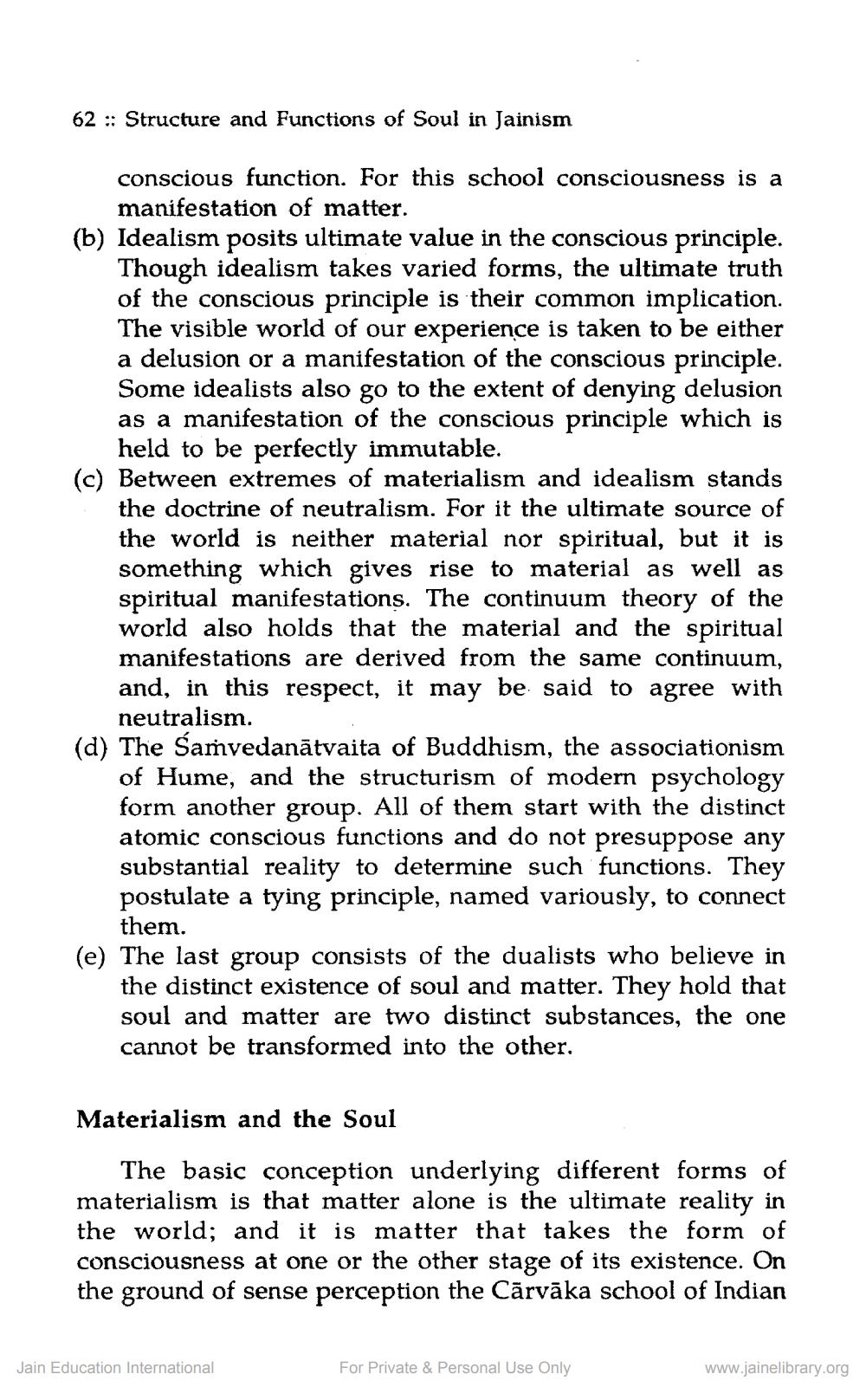________________
62 :: Structure and Functions of Soul in Jainism
conscious function. For this school consciousness is a
manifestation of matter. (b) Idealism posits ultimate value in the conscious principle.
Though idealism takes varied forms, the ultimate truth of the conscious principle is their common implication. The visible world of our experience is taken to be either a delusion or a manifestation of the conscious principle. Some idealists also go to the extent of denying delusion as a manifestation of the conscious principle which is
held to be perfectly immutable. (c) Between extremes of materialism and idealism stands
the doctrine of neutralism. For it the ultimate source of the world is neither material nor spiritual, but it is something which gives rise to material as well as spiritual manifestations. The continuum theory of the world also holds that the material and the spiritual manifestations are derived from the same continuum, and, in this respect, it may be said to agree with
neutralism. (d) The Samvedanātvaita of Buddhism, the associationism
of Hume, and the structurism of modern psychology form another group. All of them start with the distinct atomic conscious functions and do not presuppose any substantial reality to determine such functions. They postulate a tying principle, named variously, to connect
them. (e) The last group consists of the dualists who believe in
the distinct existence of soul and matter. They hold that soul and matter are two distinct substances, the one cannot be transformed into the other.
Materialism and the Soul
The basic conception underlying different forms of materialism is that matter alone is the ultimate reality in the world; and it is matter that takes the form of consciousness at one or the other stage of its existence. On the ground of sense perception the Cārvāka school of Indian
Jain Education International
For Private & Personal Use Only
www.jainelibrary.org




